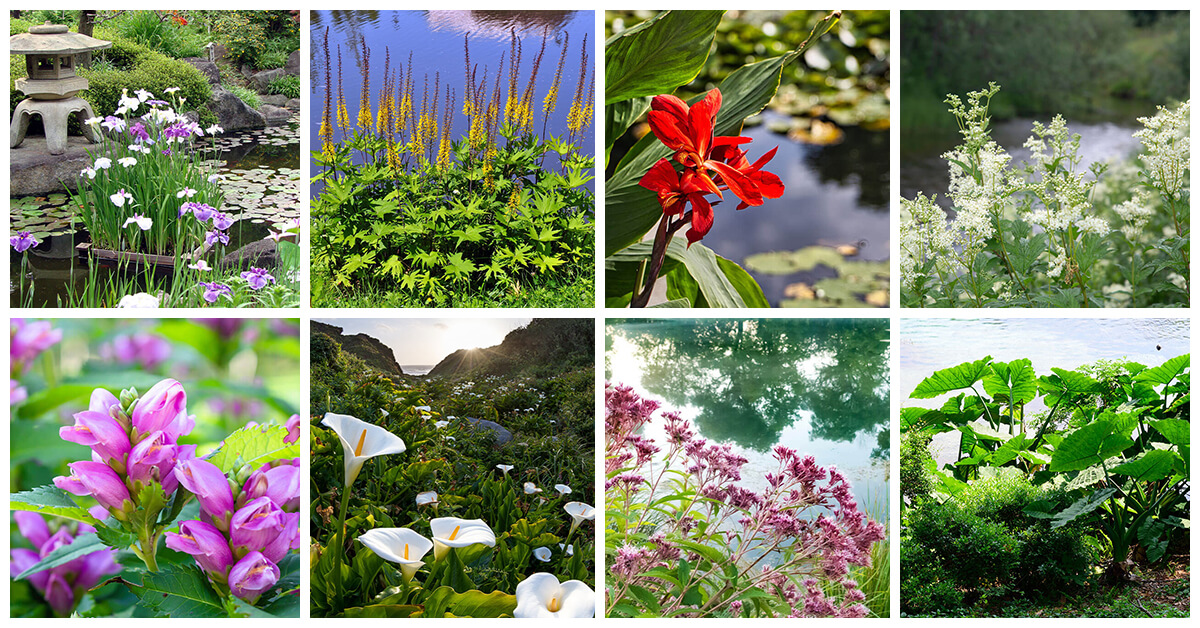Grow abundant lush growth with water-loving plants for wet outdoor areas. While water conservation is a big consideration for many gardeners, some of us are lucky enough to have soggy soils, lots of rain, or ponds and streams where water-loving plants will thrive.
Heavy, rich soil that retains moisture is an opportunity to create gorgeous rain gardens, natural bog gardens, or establish a flourishing tropical area in the garden. Water-loving plants have special growing habits that allow them to thrive with wet roots. Where other types of plants might rot or die, water-loving plants tolerate and even love soggy, boggy soils.
Key Takeaways
- Plants that thrive in wet conditions don’t like to dry out, so are a great choice for rain gardens, water gardens, or for planting close to natural waterways.
- Many water-loving plants have extravagant blooms such as Canna Lily (Canna) and Meadowsweet (Filipendula ulmaria).
- Wildlife love water, and water-loving plants like Joe Pye Weed (Eutrochium) and Swamp Milkweed (Asclepias incarnata) help bees, butterflies, and other wildlife succeed.
- Water-loving plants for wet outdoor areas can be shade loving, like Leopard Plant (Ligularia).
- Some water-loving plants are fantastic in full sun, including Iris (Iris), Golden Creeping Jenny (Lysimachia nummularia), and Calla Lily (Zantedeschia).
10 Luscious Water-Loving Plants for Your Rain Garden
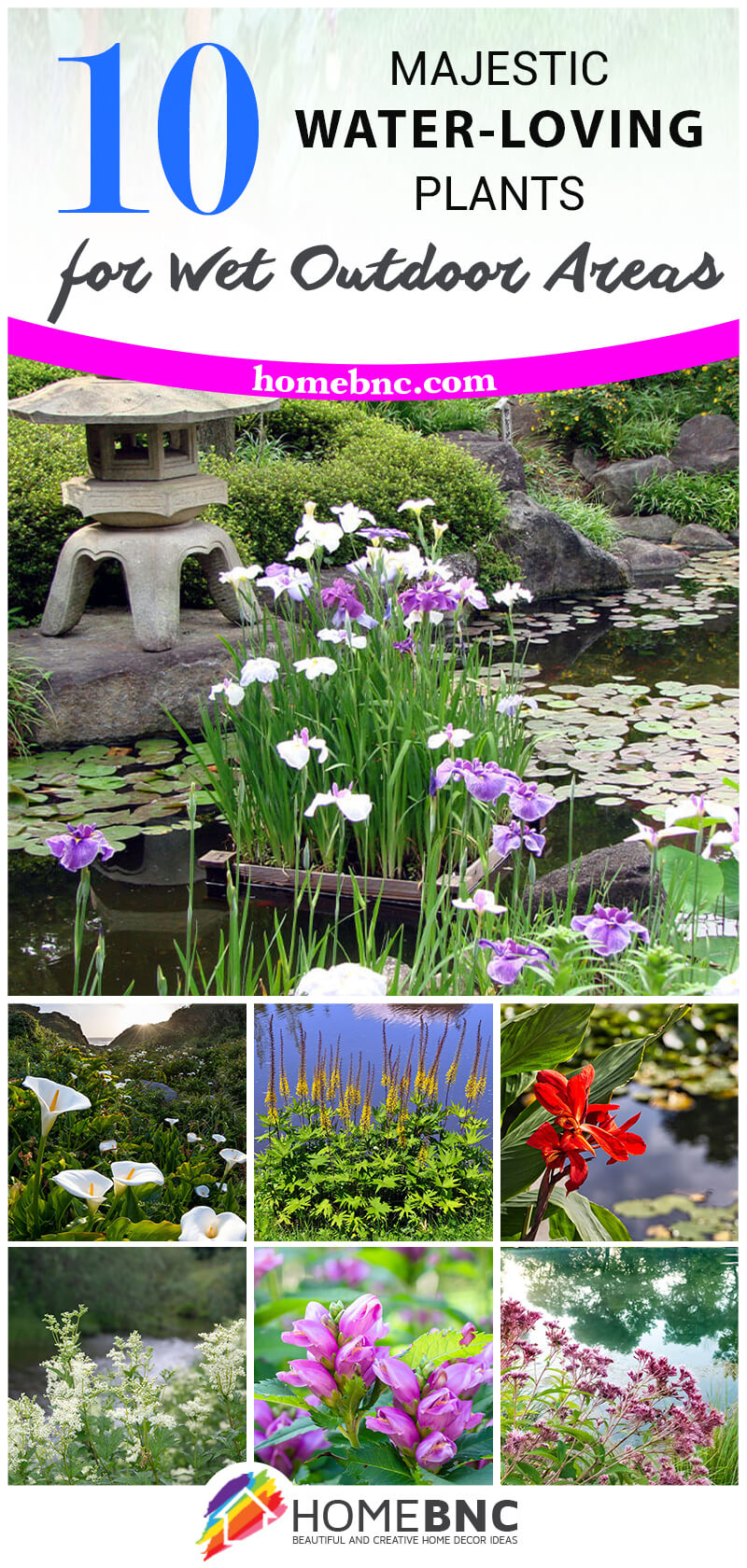
1. Iris Japanese and Siberian (Iris)
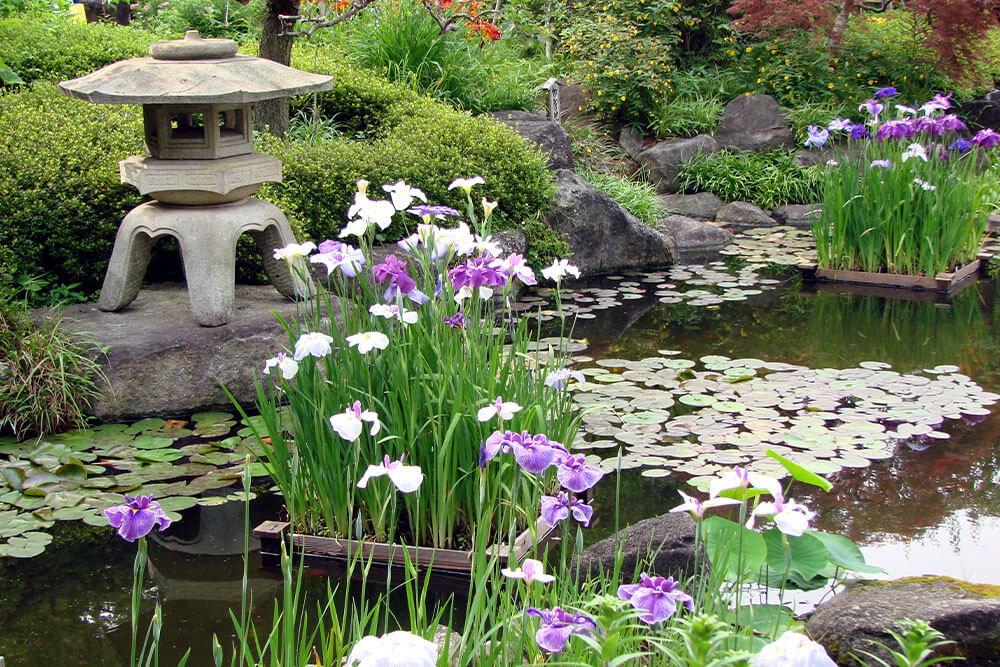
Iris soaks up water, thrives in amphibious conditions, and doubles in size and beauty in water-logged soils. Named after Iris, the goddess of the rainbow, Iris’ bloom in unbelievable colors and color combinations. Iris lovers are known to become fanatical about growing new, rare, and uniquely colored and patterned flowers.
Properly water-loving, Siberian and Japanese Irises are excellent choices for brilliant spring color in moist to waterlogged bog and pond gardens. Growing 2 to 4 feet tall, depending on the variety, these irises are hardy in USDA zones 3 to 9. While Siberian and Japanese Irises originate from Asia, there are Iris species native to North America, as well, such as Iris versicolor (Blue Flag) and Iris virginica (Southern Blue Flag).
2. Canna Lily (Canna)
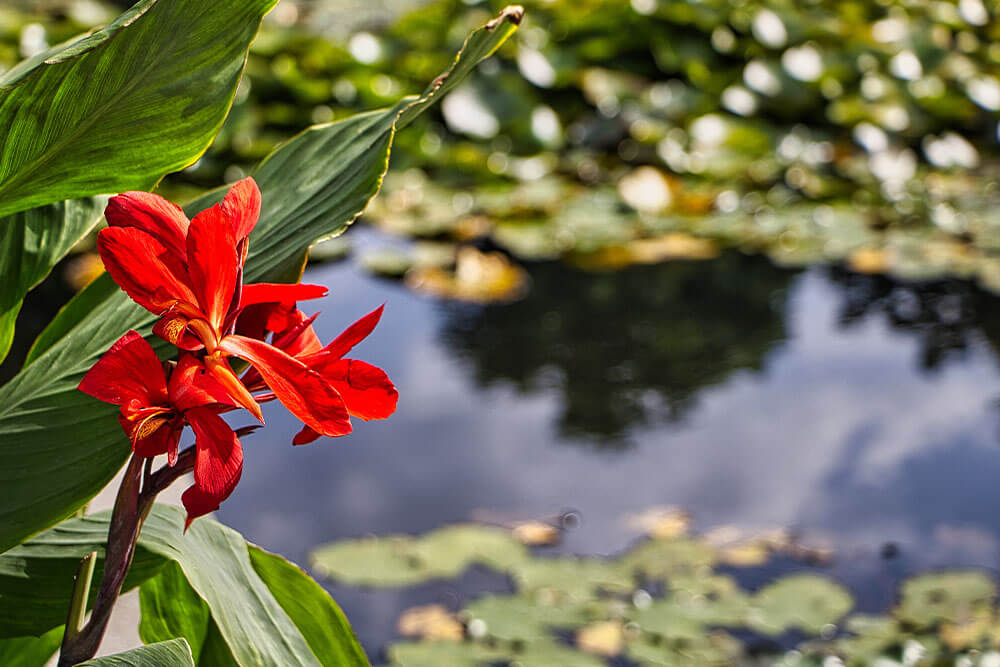
Nothing beats Canna Lily for tropical flare in the garden. Large broad leaves unfurl revealing colorful solid or variegated leaves. The giant asymmetric flowers rise above the leaves on spikes all summer long. Often, the flowers are bright white, bold red, vibrant orange, or lively yellow with seemingly limitless combinations of these colors.
The flowers attract birds, bees, and hummingbirds. This tropical or subtropical plant has some native species found in the southern parts of the USA. Cannas are generally hardy in USDA zones 7 to 11. The rhizomes or root structures can be brought inside for winter in colder climates and replanted in the spring.
This tropical plant is thirsty too. You will have success with moderate watering but in arid areas, Canna roots or Cannas planted in pots can be submerged in ponds or pools to soak up lots of water.
3. Calla Lily (Zantedeschia)
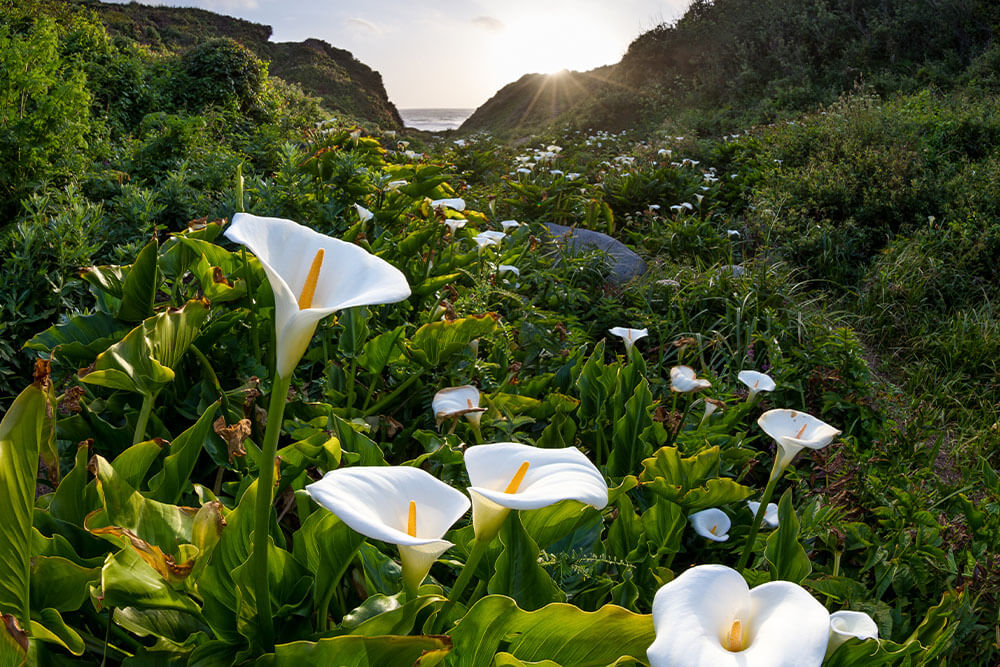
Calla Lily thrives in wet soil. It is an excellent pond plant that also does well in containers and as a houseplant. A favorite for cut flowers, the bloom consists of small flowers on a spike or spadix. The spadix is surrounded by a large colorful spathe or petal-like sheath. Colors range from yellow, red, pink, and purple but are often green or pure white.
The showy flowers grow from bulbs that are hardy in USDA zones 7 to 10. They originate from Africa, growing 1 to 3 feet tall. There are 8 species and many cultivars. Calla Lily generally has arrow-shaped leaves and bloom late in spring to early summer.
4. Joe Pye Weed (Eutrochium)

For the love of butterflies, the wet-meadow-loving Joe Pye Weed is an amazing plant. Huge in impact and in character, Joe Pye Weed is native to central and eastern North America. Growing 5 to 7 feet tall, this summer-blooming giant is hardy in USDA zones 4 to 9.
vAt home on streambanks and low moist ground, Joe Pye Weed is lovely in the rain garden, in damp naturalized areas, and as a border to water gardens. The vanilla-scented mauve canopy of blossoms is not only gorgeous, but it also attracts many pollinators, bees, and butterflies.
5. Swamp Milkweed (Asclepias incarnata)
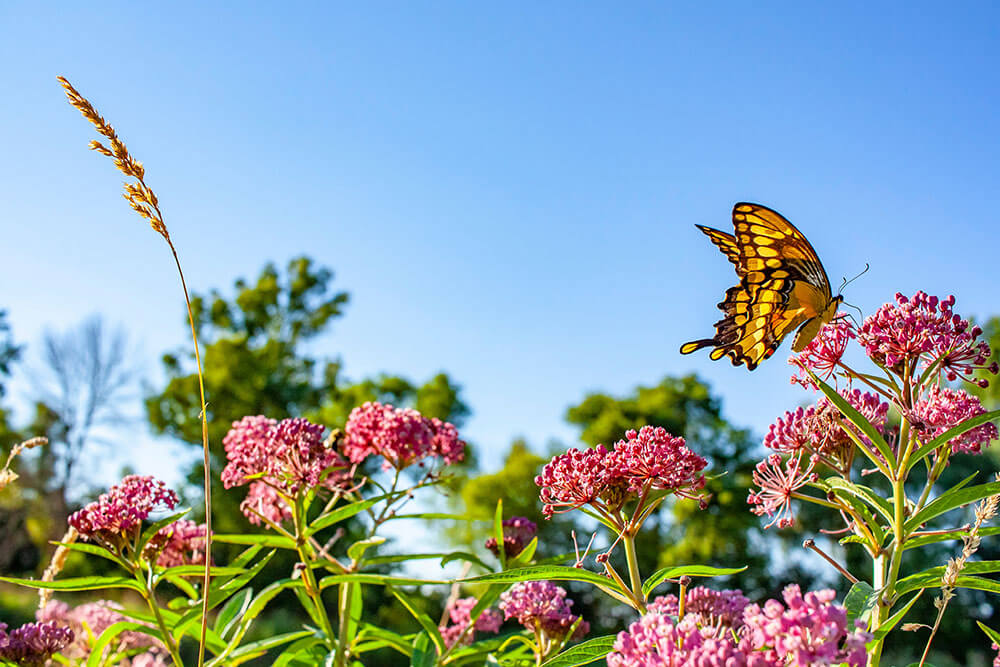
Widely known for its wildlife value, Swamp Milkweed also thrives in wet areas. It is an important larval host plant for Monarch butterflies and a major nectar source for many pollinators. This North American native plant naturalizes in riparian and pond areas. It is an obvious choice for pollinator and butterfly gardens but is pretty in the pool side and water gardens as well.
The tiny glossy pink or white flowers are showy and fragrant in masses on top of the 3-to-5-foot plants. Blooming in summer through fall, Swamp Milkweed is hardy in USDA zones 3 to 9.
6. Leopard Plant (Ligularia)
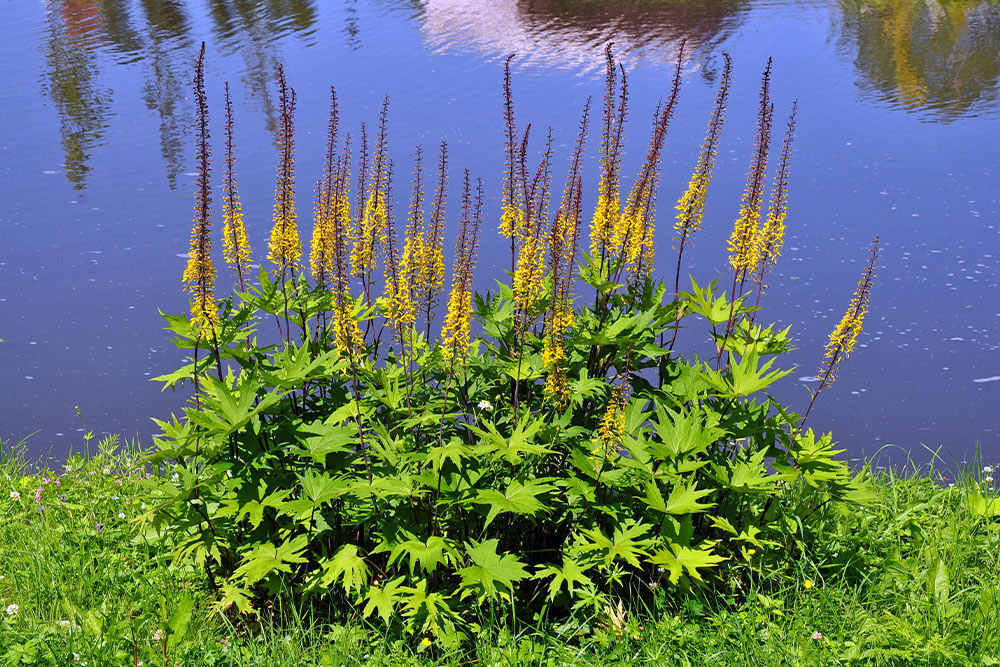
This summer bloomer has massive, tall spikes of luminous lemon-yellow, daisy-like flowers. Ligularia thrives in full shade and wet soil. Growing from a lush basal rosette of large, interesting leaves, Leopard Plant spreads 2 to 4 feet across and 3 to 6 feet tall. When not in bloom, the plants keep an attractive mounded form.
Flourishing in USDA hardiness zones 4 to 8, this water-loving plant is long blooming through June and July. It prefers protection from wind and humus-rich soils that never dry out. Being a plant that loves keeping its roots wet, Ligularia is an excellent choice for rain gardens, bog gardens, and along streams and ponds.
7. Meadowsweet (Filipendula ulmaria)
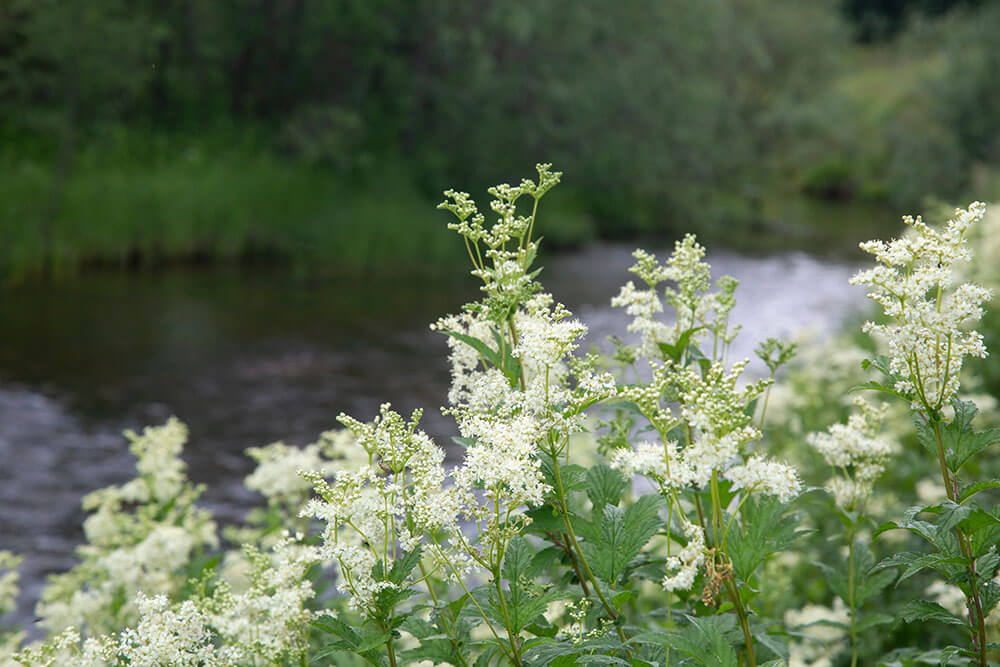
Although Meadowsweet originates from Asia, it has naturalized through many parts of Europe, Eastern Canada, and Mid-Atlantic and Northeast USA. Standing 4 feet tall, Meadowsweet is often found in wet areas such as marshes, wet woodlands, meadows, and near waterways. A water-loving plant that grows in full sun, Meadowsweet is hardy in USDA zones 3 to 9. It self-seeds and can spread beyond its desired area.
Above the aromatic leaves, upright clusters of tiny flowers form in spring and summer. The 6-inch panicles are white to pink. Meadowsweet’s showy flowers are great for cut and dried flower arrangements. The blossoms have a strong, sweet aroma attractive to bees and other wildlife.
8. Turtlehead (Chelone)
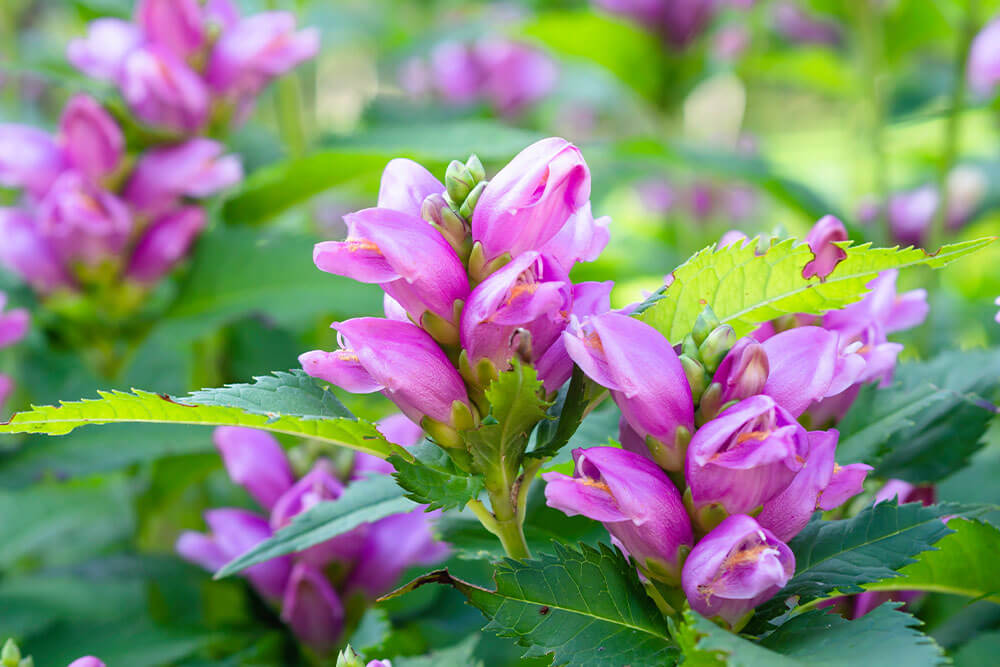
If you love snapdragons, you’ll love this North American native perennial plant. Turtlehead’s tubular flowers form a hooded structure that looks like a turtle’s head with an open mouth. In red, pink, or white, the flowers rise above the dense, dark green leaves. Attractive to bees, butterflies, and hummingbirds, Turtlehead is found along streams, in moist woodlands, in bogs, and marshes.
Growing 2 to 3 feet tall in USDA hardiness zones 3 to 9, Turtlehead love moist rich soils. They are slow-growing and bloom late in the season, fantastic for late summer and fall color.
9. Elephant Ear (Colocasia)
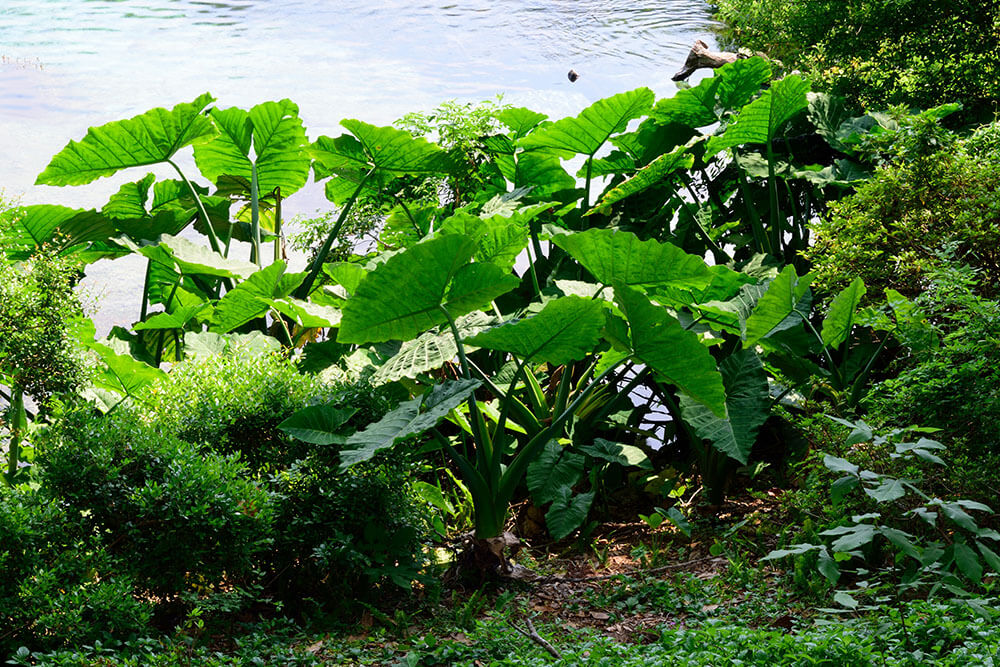
Dynamic jungle lusciousness, Elephant Ear is a tropical perennial with outstanding giant leaves. Incredible variation in cultivars gives many choices. There are varieties with interestingly shaped foliage, others with contrasting edges and leaf veins. And colors range from bright, lime green, to nearly black leaves. Native to Africa, Asia, Australia, Central and South America, Elephant Ear thrives in moist conditions during the growing season.
In its native tropical lands, Elephant Ears can grow truly enormous, but garden varieties are tamer at 3 to 6 feet tall. They tolerate full sun to part shade. Hardy in USDA zones 8 to 10, but in colder climates tubers can be lifted when temperatures fall and replanted the following spring.
10. Golden Creeping Jenny (Lysimachia nummularia)
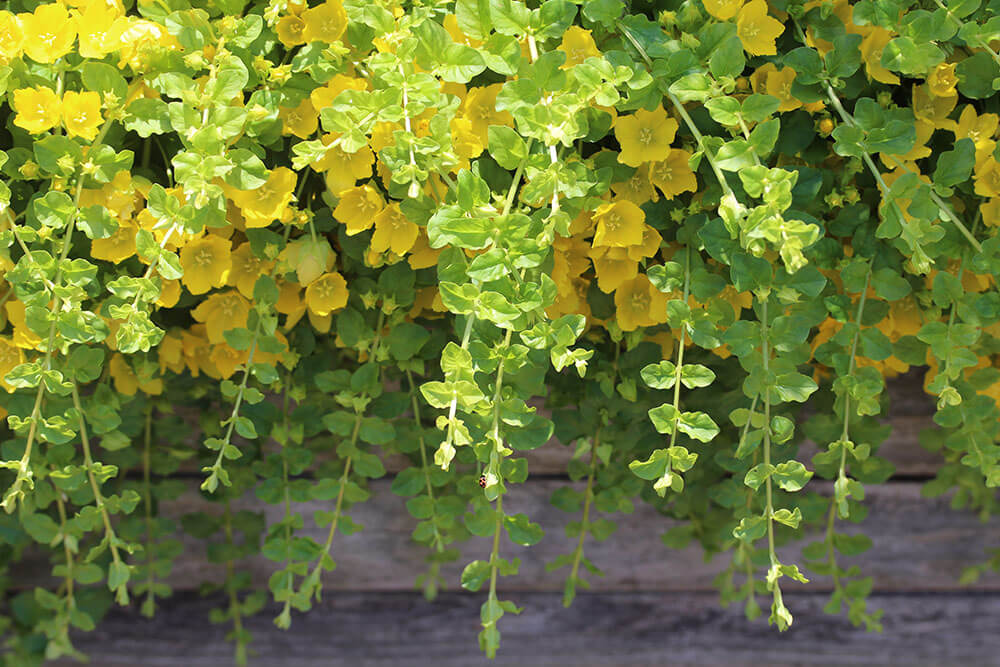
Also known as moneywort, Golden Creeping Jenny is very easy to grow, especially when it has lots of moisture. An evergreen ground cover, it is excellent grown in hanging baskets and containers as it delightfully spills over edges. As a ground cover, Golden Creeping Jenny fills in areas with its soft, chartreuse green leaves and sparse summer yellow flowers. Being easy to grow, it can get out of hand and become a weed problem in some areas.
This water-loving plant only reaches 2 to 4 inches tall and spreads 12 to 18 inches wide. It originates from Europe and Western Asia. It is an herbaceous perennial, hardy in USDA zones 4 to 9.
[wp-faq-schema title=”Frequently Asked Questions About Water-Loving Plants” accordion=1]10 Scrumptious Water-Loving Plants to Soak Up Water
Wet outdoor areas are an opportunity for gardeners. Water-loving plants are perfect for rain gardens, water gardens and natural bog gardens. When we are lucky enough to have wet soils, a lot of rain, or ponds and streams, we can grow thriving water-loving plants. Where other types of plants may suffer, water-loving plants have special growing habits that allow them to thrive with wet roots. In soggy, boggy soils, there are many outstanding plants for a flourishing garden.

